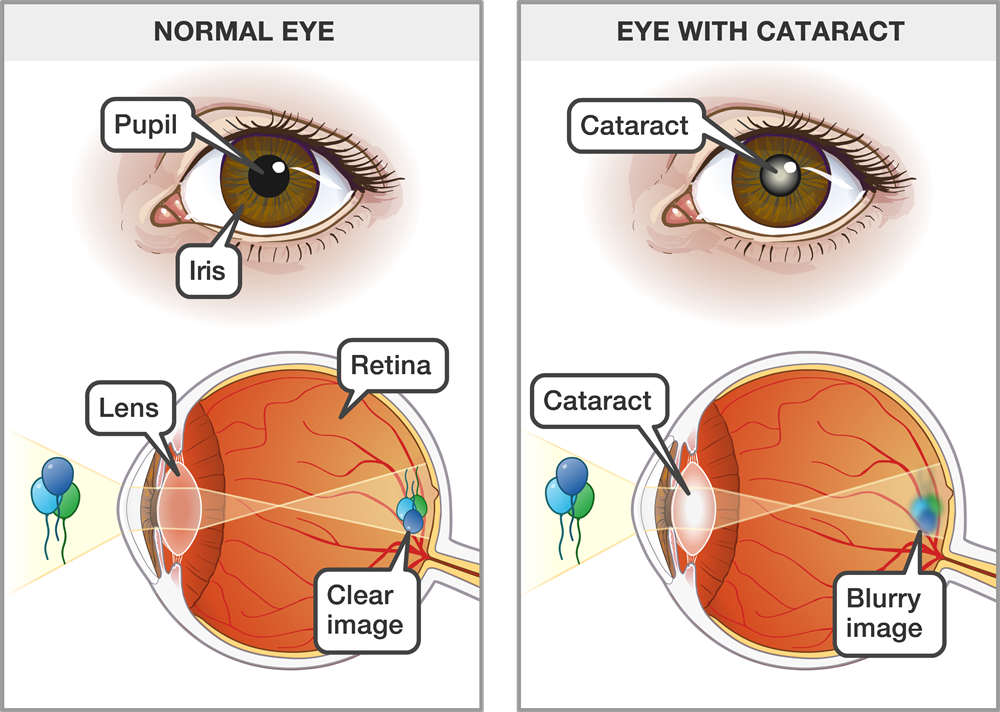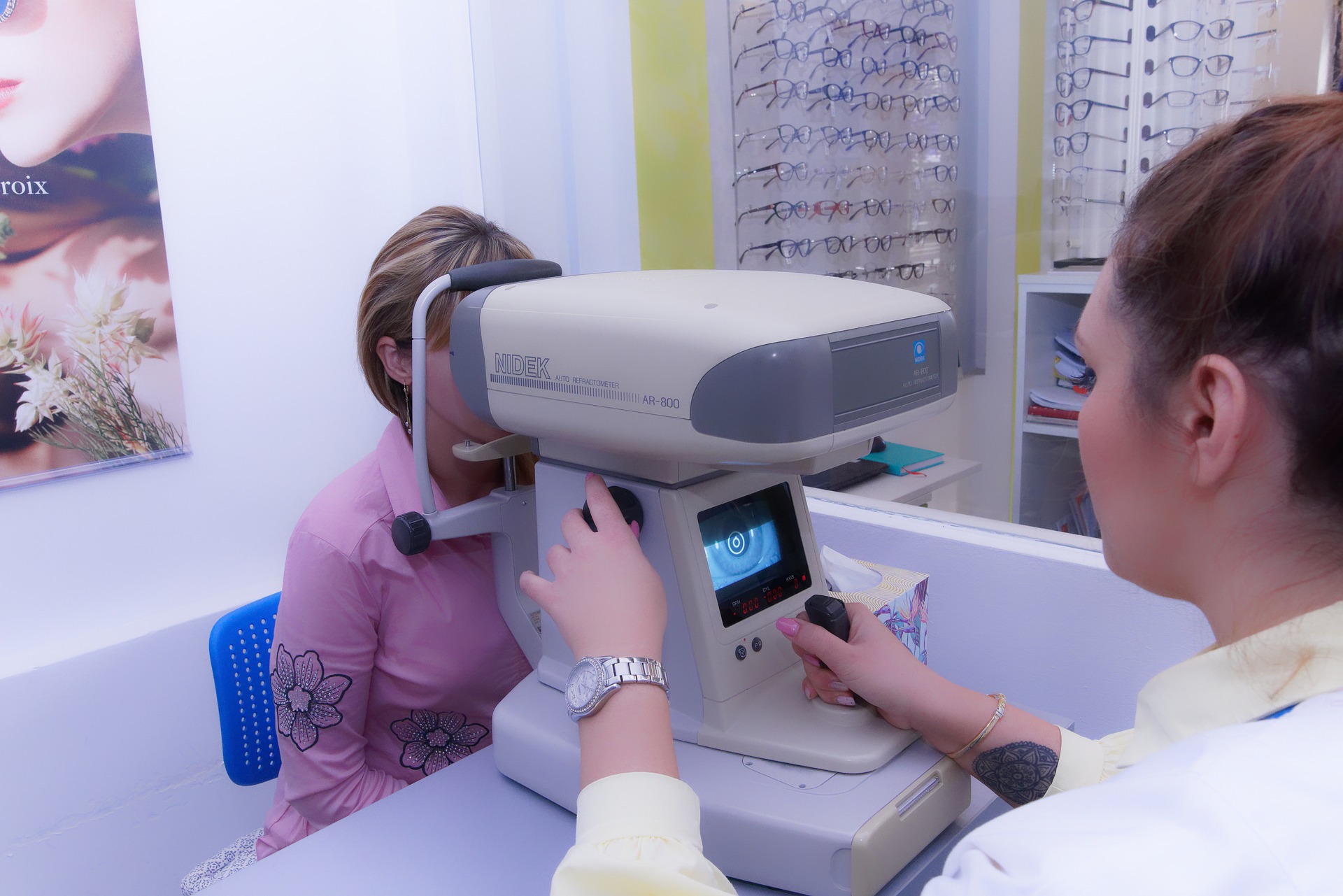Cataract?
Cataract Surgery is it hard to bear
Mr Sheikh’s cataract surgery record is comparable to the national cataract data set with a very low complication rate. Mr Sheikh takes on routine, low risk cataract surgery cases as well as complex high risk cataract surgery cases.
What is a Cataract?
A cataract is opacity of the natural lens inside the eye. This opacity can be due to a number of reasons but the most common reason is ageing change. As the lens become more and more opaque, the vision becomes more blurred. Some patients may get glare especially when driving at night. Most patients will notice a gradual blurring of vision. Colours may appear dull and grey. The contrast is affected and the ability to distinguish objects in different shades of light is affected.
Cataract is an opacity of the lens of the eye. The lens is made of a transparent substance with proteins and fibres. Over time and other factors, which include exposure to ultraviolet light, the proteins can become denatured and the transparent proteins in the lens of the eye start becoming opaque.
This is very similar to the egg white when it is in a raw state (transparent, i.e. you can see through it). When the egg is boiled, the proteins in the egg white become denatured and the transparent egg white starts becoming opaque.
This situation leads to blurred vision and ultimately loss of sight.
Some people can develop a cataract earlier in life. The causes may be congenital, genetic (i.e. runs in the family), trauma, inflammation, diabetes, steroid use or other conditions which may cause the lens of the eye to displace or become opaque.





What is a Cataract?
A cataract is opacity of the natural lens inside the eye. This opacity can be due to a number of reasons but the most common reason is ageing change. As the lens become more and more opaque, the vision becomes more blurred. Some patients may get glare especially when driving at night. Most patients will notice a gradual blurring of vision. Colours may appear dull and grey. The contrast is affected and the ability to distinguish objects in different shades of light is affected.
Cataract is an opacity of the lens of the eye. The lens is made of a transparent substance with proteins and fibres. Over time and other factors, which include exposure to ultraviolet light, the proteins can become denatured and the transparent proteins in the lens of the eye start becoming opaque.
This is very similar to the egg white when it is in a raw state (transparent, i.e. you can see through it). When the egg is boiled, the proteins in the egg white become denatured and the transparent egg white starts becoming opaque.
This situation leads to blurred vision and ultimately loss of sight.
Some people can develop a cataract earlier in life. The causes may be congenital, genetic (i.e. runs in the family), trauma, inflammation, diabetes, steroid use or other conditions which may cause the lens of the eye to displace or become opaque.








What if I have a cataract?
A cataract is opacity of the natural lens inside the eye. This opacity can be due to a number of reasons but the most common reason is ageing change. As the lens becomes more and more opaque, the vision becomes more blurred. Some patients may get glare specially when driving at night. Most patients will notice a gradual blurring of vision. Colours may appear dull and grey. The contrast is affected and the ability to distinguish objects in different shades of light is affected.
Cataract is an opacity of the lens of the eye. The lens is made of a transparent substance with proteins and fibres. Over time and other factors which include exposure to ultraviolet light, the proteins can become denatured and the transparent proteins in the lens of the eye start becoming opaque.
This is similar to an egg white when it is in a raw state (transparent ie you can see through it). When the egg is boiled, the proteins in the egg white become denatured and the transparent egg white starts becoming opaque.
This situation leads to blurred vision and ultimately loss of sight.
Some people can develop a cataract earlier in life. The causes may be congenital, genetic (ie runs in the family), trauma, inflammation, diabetes, steroid use or other conditions which may cause the lens of the eye to displace or become opaque.
The loss of sight can be of various types
An example of how cataract can impair the vision is demonstrated by a series of photographs. These are a series of photographs taken by a phone camera on a cold London morning through a windscreen.
What will happen after my consultation?
Your eyes will be measured and you will be assessed for fitness for local anaesthesia. Depending upon your requirements an artificial lens (intraocular lens; IOL) will be chosen for you. If you wish to be put to sleep during your surgery, you may need to undergo a full anaesthetic assessment.
(1:2000 per injection)
(detachment, tear)
of vision
Mr Sheikh avoids problems during cataract surgery by careful and meticulous planning and good surgical technique. If any complication happens, he can deal with this in a safe and effective manner to get the best results.
with cataract surgery ?
As with any surgical procedure there are risks. Cataract surgery may not produce the desired level of vision if there are other conditions affecting the eye like macular degeneration, glaucoma or corneal conditions. 95% of cataract surgery proceeds without any complication or problems.
Approximately 2% of patients may have a complication or problems during surgery. This may include rupture of a membrane called posterior capsule rupture, vitreous loss (disturbance of the jelly), dropped nucleus (incomplete removal of cataract), bleeding or damage to the Iris. Some of these problems need a further procedure to fix the problem either at the time of the surgery or further surgery at a later date.
Some patients may develop problems after cataract surgery. This may include infection called endophthalmitis, retinal detachment, raised pressure in the eye or macular odema (retinal swelling).
Most of these problems are treatable although the final outcome after surgery depends upon the type of complication and its management.
Mr Sheikh avoids problems during cataract surgery by careful and meticulous planning and good surgical technique. If any complication happens, he can deal with this in a safe and effective manner to get the best results.
YOUR RECOVERY FROM CATARACT SURGERY
Following your surgery, an experienced team will support you through your recovery. You will usually have a dressing and a plastic shield over your eye. You can generally remove this after 24 hours, but you will be given specific instructions before your discharge.
You will usually be able to go home on the day of the operation. The local anaesthetic will gradually wear off, and sensation will return to your eye within a few hours.
You may notice:
⦁ a gritty feeling,
⦁ watering of the eyes
⦁ blurred or double vision
⦁ the eye appearing to be red or bloodshot
These symptoms gradually settle, but it can take up to six weeks to fully recover.
Your consultant will usually make an appointment to see you around a week after the operation. However, if you have any problems or worries, you should contact admin@ijazsheikh.com
